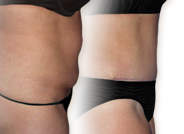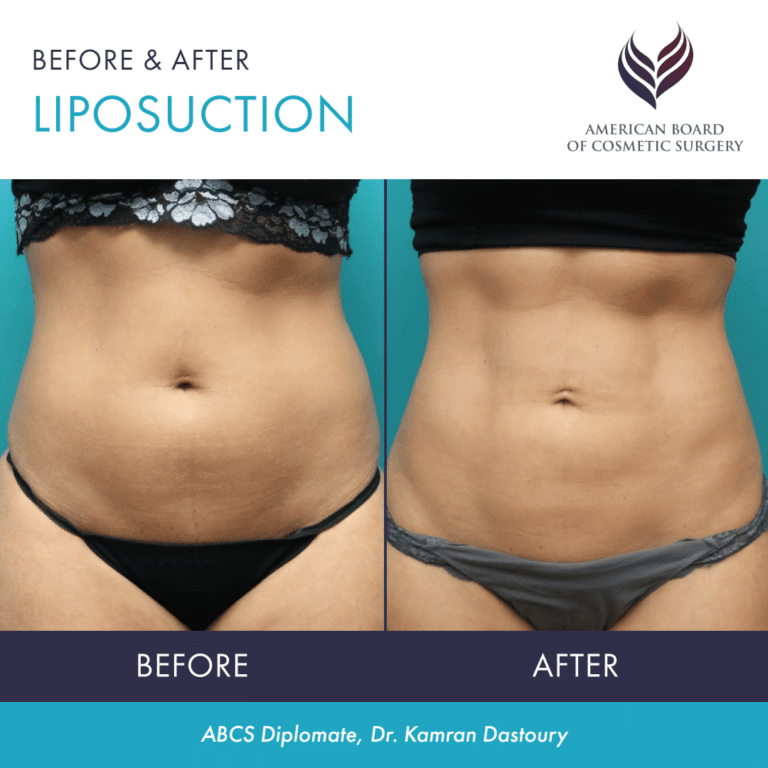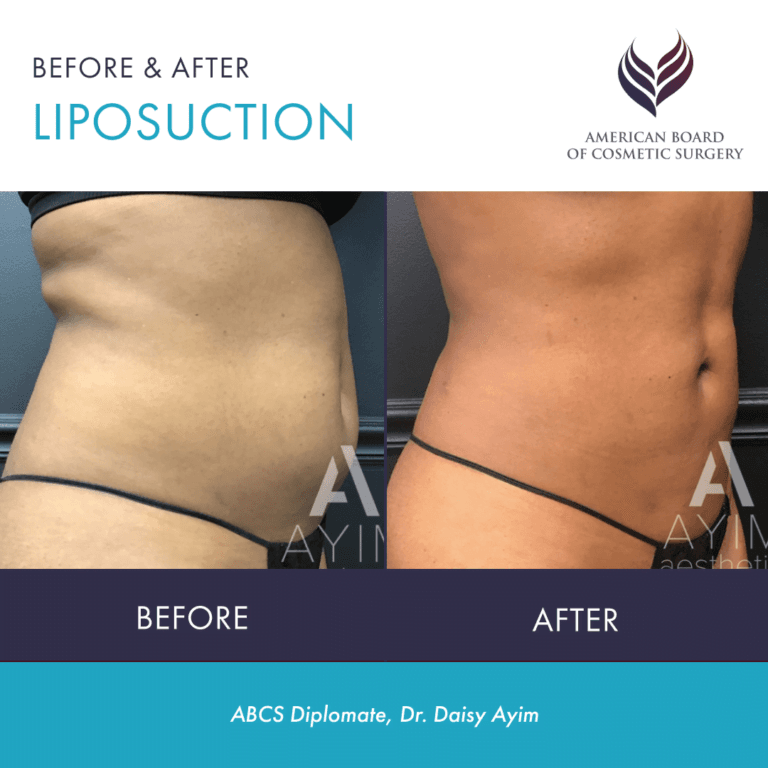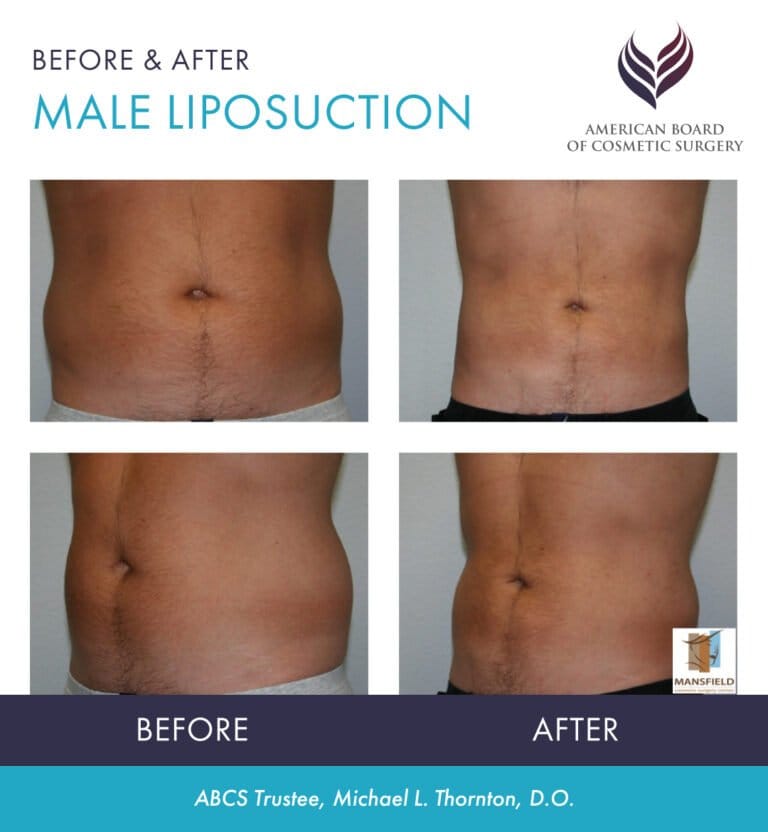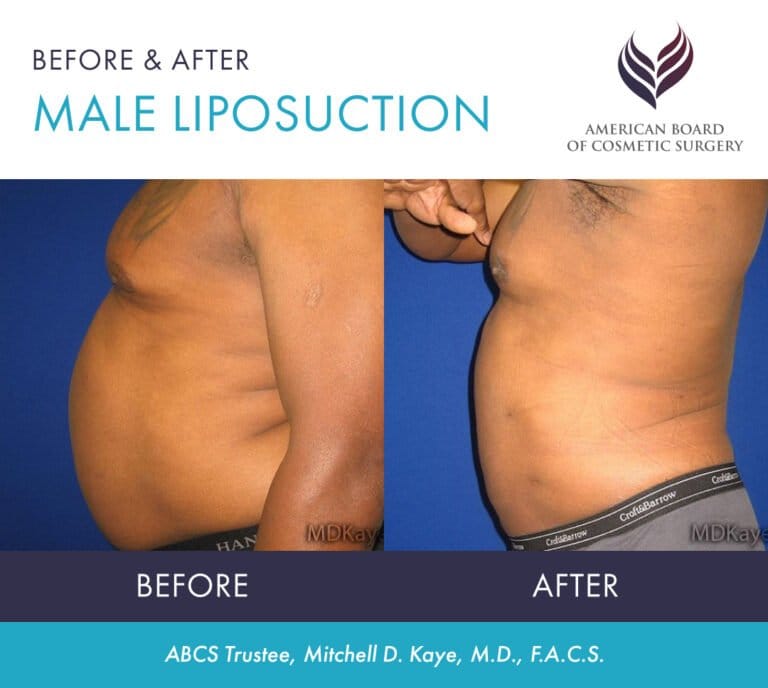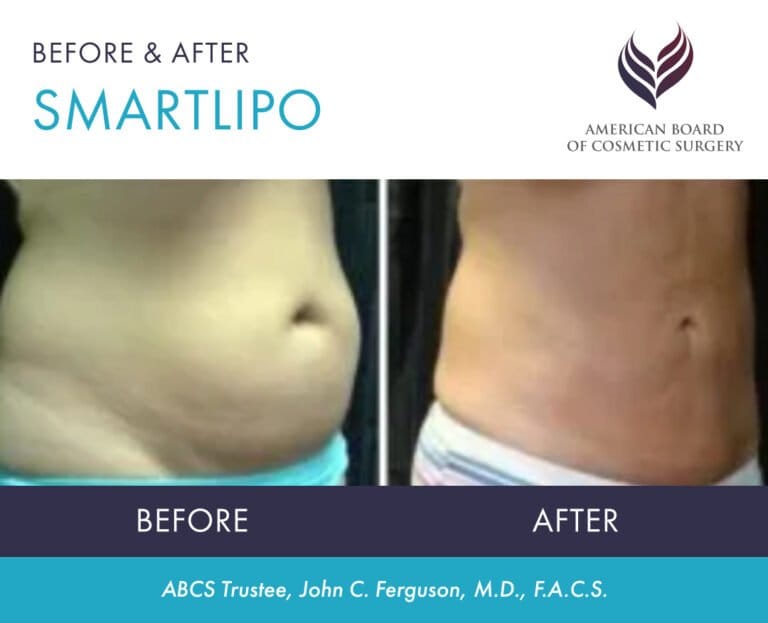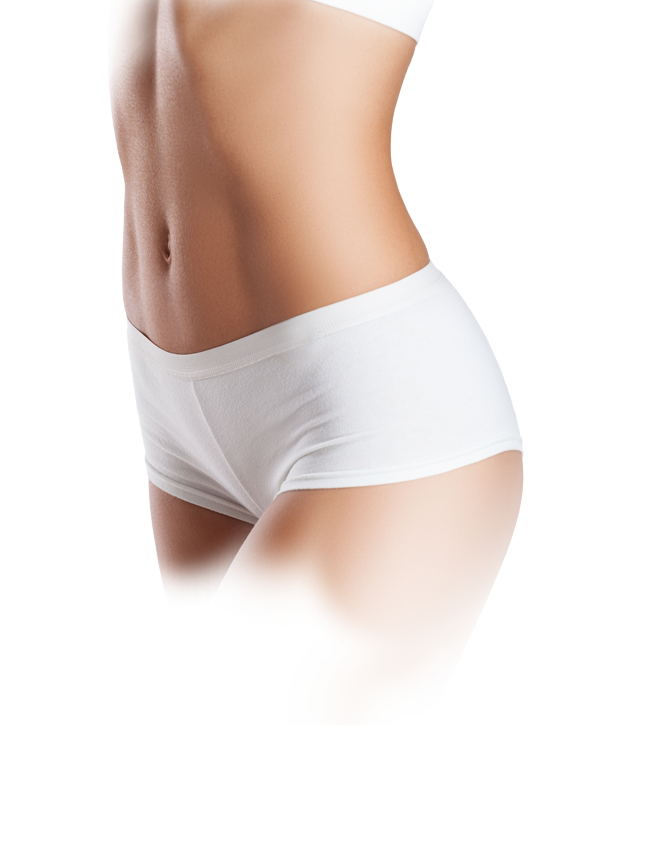What is Liposuction?
Liposuction surgery removes excess deposits of fat to sculpt an improved shape to a patient’s body. While liposuction is best known as a fat removal procedure, it is also one of the best procedures to help a patient refine their shape. In fact, cosmetic surgeons often use liposuction to refine the results of other procedures, as no other technique allows for such detailed improvements in body contour.
During the procedure, a board certified cosmetic surgeon carefully and precisely removes excess fat through a small, hollow tube called a cannula. Suction is applied as the surgeon moves the cannula through the fat deposit, removing excess fat cells and sculpting a slimmer body contour.
Why consider this surgical body contouring procedure
Both men and women undergo liposuction every year to achieve a variety of different goals. Some patients want to look better in a swimsuit, while others want to find jeans that fit more comfortably. For men, liposuction can often successfully treat gynecomastia. Cosmetic surgeons will frequently use liposuction to enhance the results of other procedures.
If you are in good health, and one or more of the following apply to you, liposuction is an option to consider:
- I wish to remove fat deposits from my hips, belly, thighs, neck, chin, arms or chest that won’t respond to diet or exercise. Liposuction surgery is excellent for reducing fatty bulges and sculpting a beautifully natural contour to the body.
- I feel like certain areas are out of proportion with the rest of my figure. Reducing excess fat on one area of the body can bring it into better balance with your natural features.
- I have good skin elasticity – sagging skin is not a problem for me. For optimal results, the skin should have good enough tone to contract to the body’s new contours.
- I am at or near my desired body weight. Liposuction is best for reducing localized fat deposits, and the most satisfied patients are typically happy with their overall weight before surgery. Please see your healthcare provider to determine if you are healthy enough for a surgical procedure.

However, it’s important to have realistic expectations about what the surgery can achieve. If any of the following apply to you, then liposuction may only offer limited success in helping you achieve your goals. Your cosmetic surgeon can recommend the options best suited to your needs.
- I have loose, sagging skin that I want to address. Since liposuction is designed specifically to target fatty tissue, it will not significantly improve the appearance of loose skin. Other body contouring procedures, such as a tummy tuck or body lift, may be better options for you.
- I want to lose a significant amount of weight. Liposuction can improve your shape, which can help you look thinner and more fit, but it’s not a weight loss method. While some overweight patients can benefit from the reshaping effects, the most satisfied patients tend to be happy with their weight prior to surgery.

Surgical vs Non-surgical Body Contouring
In recent years, non-surgical or minimally invasive alternatives to liposuction have been gaining popularity. These body contouring treatments typically do not require an incision or anesthesia, and they often come with less downtime.
Liposuction surgery may be an excellent option for reducing larger deposits of excess fat. It can significantly improve your figure in several areas at once. Some negatives include a higher cost and greater risk for health complications than noninvasive techniques. Non-surgical fat reduction may be a better fit if you are already at your ideal weight, have good skin elasticity, and want to target smaller, stubborn trouble spots. However, the results will not be as dramatic as surgery would provide, and multiple treatments may be necessary.
If you are interested in a less invasive or a non-surgical body contouring alternative, read our blog discussing popular liposuction alternatives, and how to decide which method is best for your personal goals.
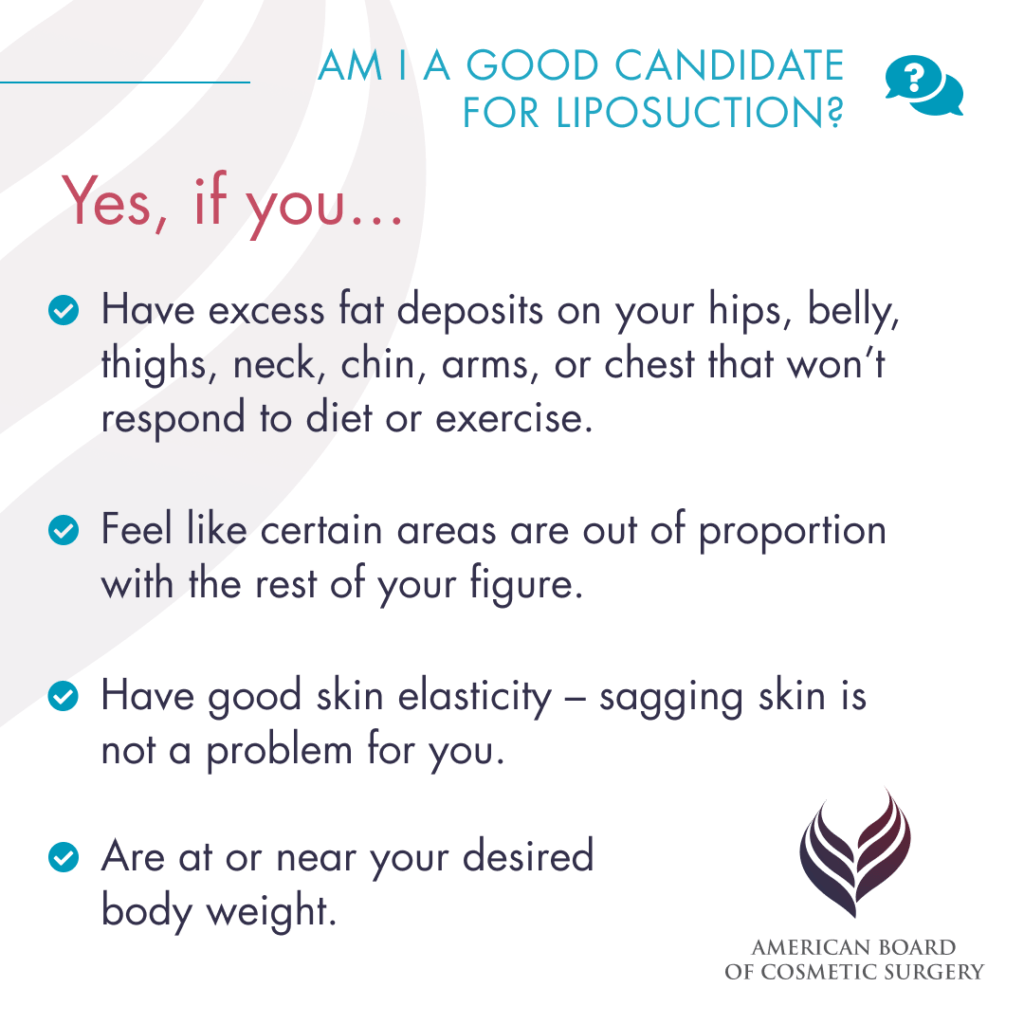
Types of Liposuction
There are many different liposuction procedure techniques available to surgeons today. The main difference between types of liposuction is the technology they use to assist the fat removal process. The manufacturers of each of these types claim to have unique advantages, and surgeons will sometimes prefer a certain technique depending on the nature of the procedure. Just remember that the skill and experience of the cosmetic surgeon performing liposuction will make the biggest difference in your results.
Below are some of the types of liposuction more commonly used by cosmetic surgeons today:
- Tumescent Liposuction: With this technique, a cosmetic surgeon will inject an anesthetic “tumescent” solution into the treatment areas to minimize bleeding and discomfort during the procedure. Depending on the patient, tumescent liposuction can often be performed with local anesthesia.
- Ultrasound Assisted Liposuction: This technique utilizes ultrasound energy to help break up the fatty tissue and loosen it from the body, allowing for easier removal of larger amounts of fat with a faster surgery. Variations include VASER Liposelection.
- Laser Assisted Liposuction: Known under brand names like SmartLipo and Slimlipo, these techniques use laser energy to help dislodge fat cells.
- Suction Assisted Liposuction: This technique uses a vacuum like device to help remove the fat. Power Assisted Liposuction is a similar technique that involves a tool that enhances the motion of the cannula used to remove the fat.
How much does liposuction cost?
Price Range: $1,000 - $20,000
Based on a nationwide ABCS survey, the average cost of liposuction is $3,617. Liposuction costs for any given patient can vary considerably depending on the size and location of the targeted areas of the body. During your consultation with a surgeon, be sure to ask about the price and any additional costs or fees associated with it.
Use our pricing calculator to see the typical price range for liposuction in your area.
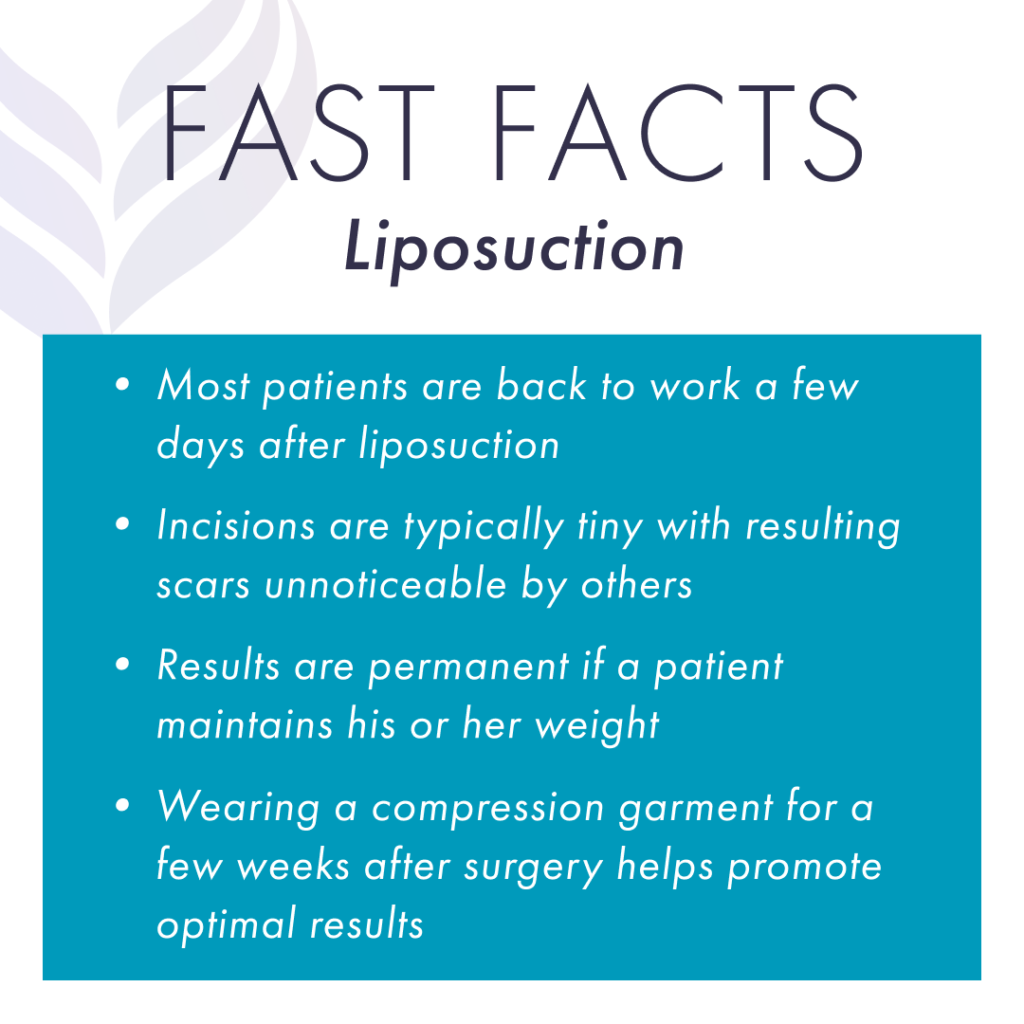
How the Procedure Works
Liposuction is an outpatient procedure and can be safely performed using general anesthesia, intravenous sedation, or local anesthesia, depending on the nature of the procedure. Your cosmetic surgeon will recommend the anesthesia method that is most appropriate for your needs.
Your cosmetic surgeon will make one or more small incisions near the treatment areas. A cannula, or thin tube, is inserted through these incisions to loosen excess fat beneath the skin. Then, the fat is suctioned out. The entire procedure can take under an hour or up to 3 hours or longer, depending on the number of areas treated.
In this video, ABCS diplomate Dr. Samir Pancholi discusses how a unique plan for a liposuction procedure is created with each patient depending on their desired results and current physique, while always aiming for smooth, natural-looking body contours.
- Key Benefits
- Glossary
- Reduces fat deposits: Liposuction can target stubborn areas of fat that are resistant to diet and exercise, such as the abdomen, thighs, hips, and arms.
- Improves body contours: By removing excess fat, liposuction can improve the overall shape and proportion of the body.
- Enhances muscle definition: In some cases, liposuction can be used to sculpt the body and enhance muscle definition, especially for individuals who are already in good physical shape but have pockets of fat that are obscuring their muscle tone.
- Highly customizable: Liposuction can be used in a variety of body areas to a small or large extent, allowing your board certified cosmetic surgeon to carefully personalize your results.
- Lipoplasty: A surgical procedure, commonly known as liposuction, that involves removing excess fat deposits from specific areas of the body.
- Tumescent liposuction: A technique that involves injecting a large volume of diluted local anesthetic and epinephrine into the target area before liposuction to minimize bleeding and discomfort.
- Laser-assisted liposuction: A type of liposuction that utilizes laser energy to melt and remove fat cells, often resulting in less bleeding and faster recovery compared to traditional liposuction.
- Smart Lipo: A specific type of liposuction procedure that utilizes laser energy to liquefy fat cells before suctioning them out.
- Power-assisted liposuction: A liposuction technique that utilizes a vibrating cannula to help break up and remove fat cells more effectively and with less physical effort.
- Ultrasound-assisted lipoplasty: A type of liposuction that uses ultrasound energy to liquefy fat cells before removal through suction.
- Suction lipectomy: Another term for liposuction, referring to the surgical removal of fat cells using suction.
- Autologous fat transfer: A procedure in which fat is harvested from one part of the body and transferred to another area for augmentation or enhancement.
- Cannula: A thin, hollow tube used in liposuction to suction out fat cells from the body.
- Abdominoplasty: Also known as a tummy tuck, it is a surgical procedure to remove excess skin and fat from the abdomen and tighten the abdominal muscles for a flatter and more toned appearance.
- FUPA: An informal term referring to the fatty tissue that can accumulate in the area above the pubic bone and below the abdomen.
- General anesthesia: A state of controlled unconsciousness induced by medications to eliminate pain during surgery.
- Laser fat removal: A non-surgical procedure that uses laser energy to disrupt and liquefy fat cells, which are then eliminated by the body’s natural processes.
- Tummy: Informal term referring to the abdomen or stomach area.
- BBL: An acronym for Brazilian Butt Lift, a surgical procedure that involves removing fat from one area of the body via liposuction and transferring it to the buttocks for enhanced shape and volume.
- Anesthesia: The use of medications or techniques to induce a temporary loss of sensation or consciousness during medical procedures or surgeries.
Your Recovery & Results
Today’s advanced liposuction techniques are designed to minimize swelling, trauma and discomfort, and when the procedure is performed by a qualified cosmetic surgeon, recovery from liposuction can be remarkably quick. Many patients return to work just a few days after their procedures, depending on the physical requirements of their jobs and the extent of their procedures. While your cosmetic surgeon can prescribe pain medication, most patients find over the counter options more than enough to manage any post-operative soreness.
Your cosmetic surgeon may give you a compression garment to wear for a few weeks following surgery. This helps to minimize swelling and encourage optimal skin contraction. With proper care, scars should fade significantly over the months following surgery; in many cases, scars are barely visible after a year or so.
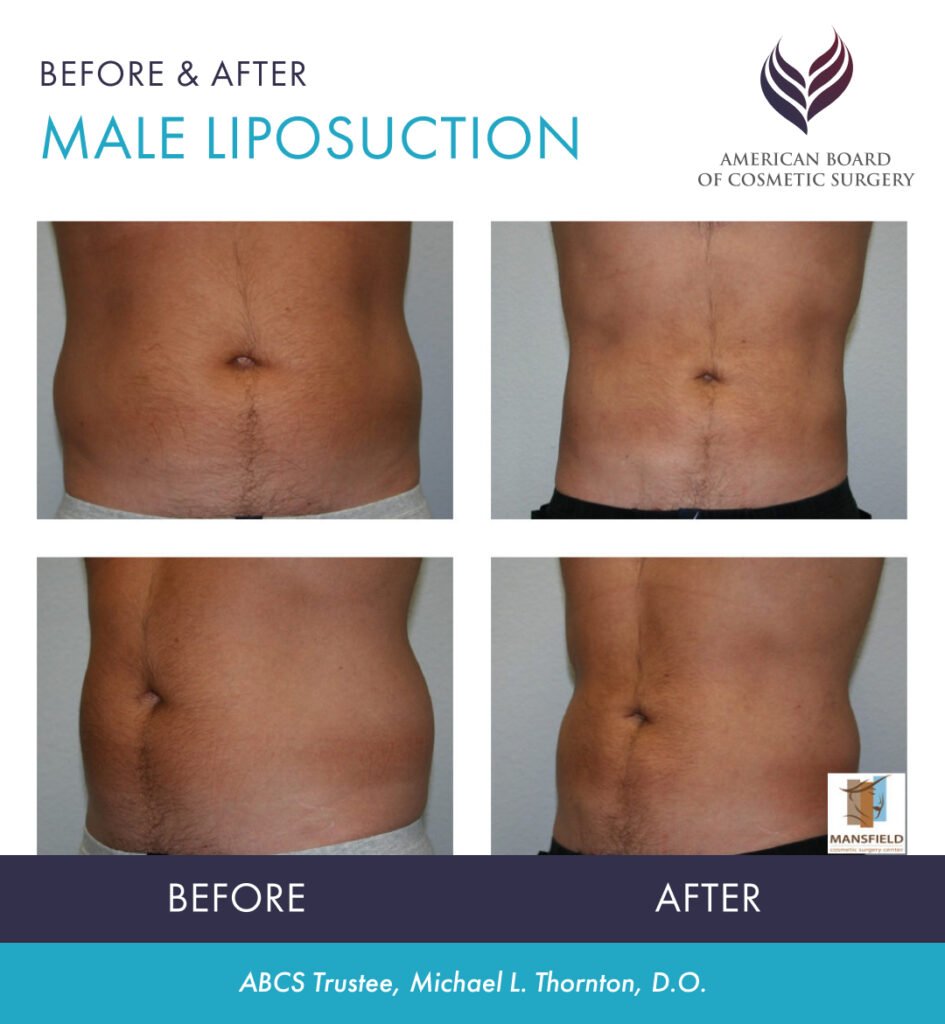
Results can last permanently with proper care
Liposuction can remove fat cells from your body, and these fat cells will not grow back. However, it is important to maintain a stable weight to ensure that your new look remains optimal. If you gain a significant amount of weight in the future, your overall appearance is likely to change as your body stores excess fat in other areas.
Find a Surgeon Certified with the American Board of Cosmetic Surgery
When performed by a qualified provider, liposuction is a safe procedure and an excellent way to improve the shape of several areas of your body. The best way to decide if liposuction is right for you is to consult with a board certified cosmetic surgeon. You can find cosmetic surgeons in your area by using our ABCS Find-a-Surgeon tool.
References »
Shridharani SM, Broyles JM, Matarasso A. Liposuction devices: technology update. Medical devices (Auckland, NZ). 2014 Jul 21;7:241-51. doi: 10.2147/MDER.S47322.
Wu S, Coombs DM, Gurunian R. Liposuction: Concepts, safety, and techniques in body-contouring surgery. Cleveland Clinic Journal of Medicine. 2020 Jun;87(6):367-375. doi: 10.3949/ccjm.87a.19097.
Bellini E, Grieco MP, Raposio E. A journey through liposuction and liposculture: Review. Annals of Medicine and Surgery. 2017 Nov 6;24:53-60. doi: 10.1016/j.amsu.2017.10.024.
Venkataram J. Tumescent liposuction: a review. Journal of Cutaneous and Aesthetic Surgery. 2008 Jul;1(2):49-57. doi: 10.4103/0974-2077.44159.
Yoshida S, Koshima I, Imai H, Roh S, Mese T, Uchiki T, Sasaki A, Nagamatsu S. Effect of Postoperative Compression Therapy on the Success of Liposuction in Patients with Advanced Lower Limb Lymphedema. Journal of Clinical Medicine. 2021 Oct 22;10(21):4852. doi: 10.3390/jcm10214852.
